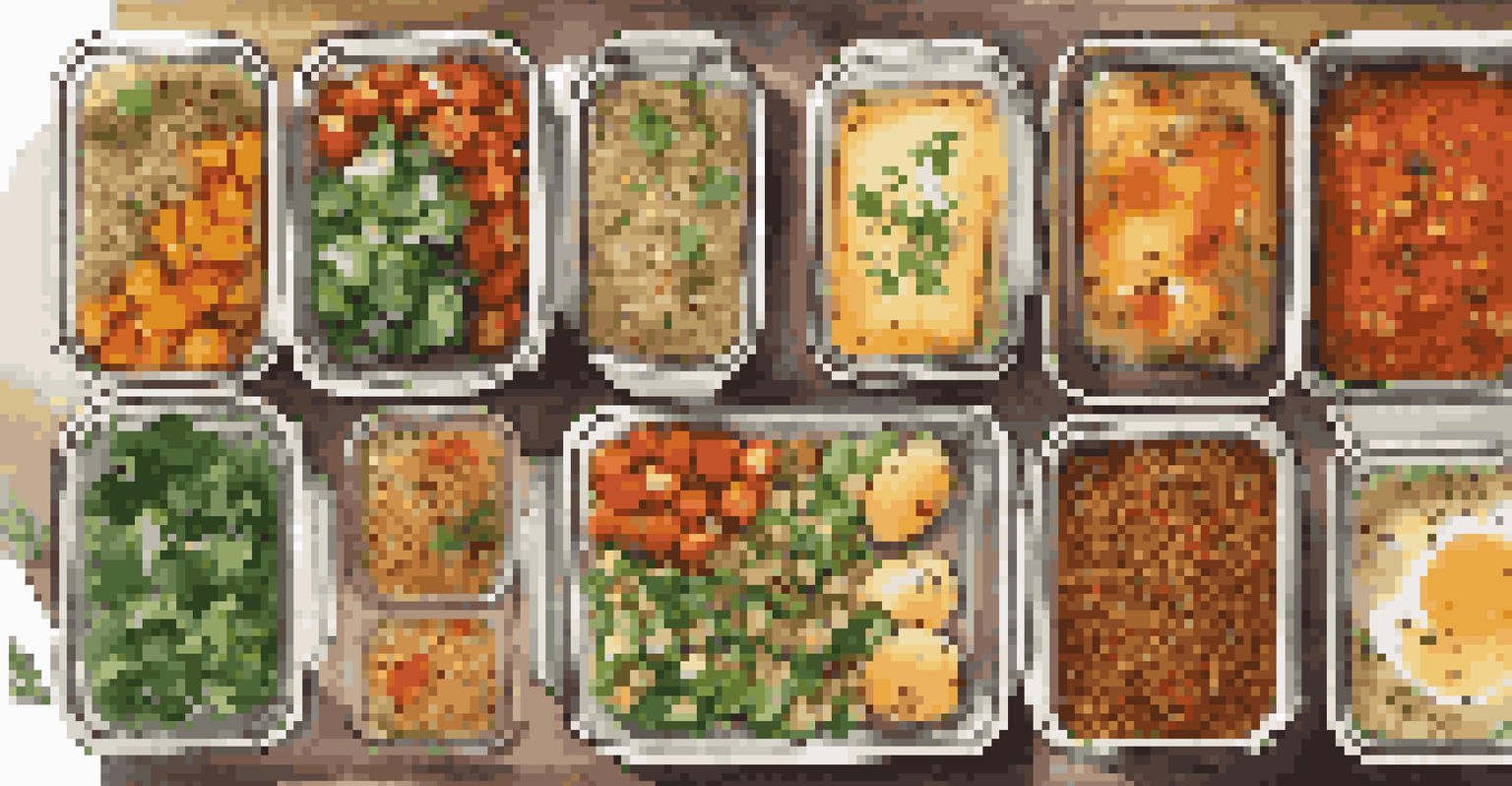Healthy Eating on a Budget: Affordable Meal Planning Tips

Understanding the Basics of Healthy Eating
Healthy eating is about more than just counting calories; it's about nourishing your body with the right foods. This means incorporating a variety of fruits, vegetables, whole grains, and lean proteins into your diet. A balanced diet can boost your energy levels, improve your mood, and enhance your overall health.
Let food be thy medicine and medicine be thy food.
However, many people assume that healthy eating comes at a high price. The good news is that with a little planning and creativity, you can enjoy nutritious meals without overspending. It's all about making informed choices and understanding what constitutes healthy food options.
Think of healthy eating as a puzzle where each piece represents different food groups. When you fit these pieces together, you create a colorful, satisfying plate that not only looks appealing but also keeps your body happy and functioning well.
Creating a Budget-Friendly Meal Plan
The cornerstone of healthy eating on a budget is a well-structured meal plan. Start by mapping out your meals for the week, focusing on recipes that incorporate seasonal and sale items. This approach not only saves money but also ensures variety in your diet.

When planning, aim for meals that can be easily adapted. For example, a stir-fry can be made with whatever vegetables you have on hand, and grains like rice or quinoa can serve as a base for numerous dishes. This flexibility helps minimize waste and maximizes your budget.
Plan Meals for Budget-Friendly Eating
Creating a structured meal plan helps you save money while ensuring a variety of nutritious foods.
Remember to include snacks in your meal plan as well! Preparing healthy snacks ahead of time, like cut-up veggies or homemade granola bars, can prevent impulse purchases of less healthy options when hunger strikes.
Shopping Smart: Tips for Grocery Shopping
When it comes to grocery shopping, strategy is key. Start by making a shopping list based on your meal plan, and stick to it to avoid impulse buys. Shopping with a list helps keep you focused on what you need, reducing the temptation to purchase expensive, unhealthy items.
The greatest wealth is health.
Also, consider shopping at local farmers' markets or discount grocery stores. These places often offer fresh produce at a fraction of the price you'd find in regular supermarkets. Plus, buying in bulk for items like grains and legumes can significantly cut costs.
Lastly, don't overlook store brands; they often provide the same quality as name brands but at a lower price. Comparing prices and being mindful of your purchases can lead to substantial savings over time.
Embracing Seasonal and Local Produce
Eating seasonally is not only better for your wallet but also for the environment. Seasonal produce is typically less expensive and tastes better since it's harvested at its peak. For instance, strawberries in summer are often sweeter and more affordable than in winter.
You can also support local farmers by choosing produce from farmers' markets or local co-ops. This not only helps your community but often results in fresher, tastier fruits and vegetables. Plus, you can ask farmers about their growing practices, ensuring you make informed choices.
Shop Smart for Better Savings
Using a shopping list and choosing local produce can significantly reduce grocery costs and enhance meal quality.
Incorporating seasonal and local produce into your meals can inspire creativity in the kitchen. Try a new recipe each season that highlights what’s available, making healthy eating an exciting adventure.
Cooking in Batches: Saving Time and Money
Batch cooking is an excellent way to save both time and money. By preparing large quantities of meals at once, you can enjoy home-cooked food throughout the week without the daily hassle of cooking. It also helps in minimizing food waste since you can use up ingredients efficiently.
Consider dedicating a few hours each week to cook and store meals in portioned containers. Dishes like soups, stews, and casseroles are perfect for this method, as they often taste even better the next day. Plus, having ready-to-eat meals on hand makes it easier to resist the temptation of takeout.
By embracing batch cooking, you not only save on your grocery bill but also ensure you have healthy options readily available, making it easier to stick to your meal plan.
Incorporating Plant-Based Meals into Your Diet
Plant-based meals can be a game-changer for your budget and health. By focusing on more vegetarian options, you can reduce meat costs while also increasing your intake of fiber, vitamins, and minerals. Beans, lentils, and chickpeas are not only affordable but also versatile and nutritious.
For instance, a hearty lentil soup can be made in bulk and served over several days, providing a filling meal that won't break the bank. Additionally, experimenting with meatless meals can introduce new flavors and ingredients into your cooking repertoire.
Get Creative with Leftovers
Transforming leftovers into new meals reduces waste and maximizes your food budget.
Transitioning to more plant-based meals doesn't mean you have to give up meat entirely. Try implementing 'Meatless Mondays' or incorporating a few vegetarian meals each week to gradually adjust your palate and budget.
Utilizing Leftovers Creatively
Leftovers can be a blessing when it comes to healthy eating on a budget. Rather than letting food go to waste, get creative and transform your leftovers into new meals. For example, roasted vegetables can be added to a salad, or leftover chicken can be used in tacos.
Think of leftovers as building blocks for your next meal. If you have extra quinoa, mix it with vegetables and a dressing for a quick salad. By repurposing leftovers, you save money and time while reducing food waste.

Consider keeping a 'leftovers night' in your meal plan, where you creatively use up what’s left in your fridge. This not only makes for an easy dinner but also encourages you to get inventive with your cooking.
Final Thoughts: Making Healthy Choices Sustainable
Ultimately, healthy eating on a budget is about making sustainable choices that fit your lifestyle. It's not just a short-term fix; it’s about creating habits that will last a lifetime. By planning meals, shopping smart, and utilizing what you have, you can maintain a nutritious diet without financial stress.
As you embark on this journey, remember that small changes can lead to significant results. Start with one or two tips that resonate with you and gradually incorporate more as you become comfortable.
With a little effort and creativity, you can enjoy the benefits of healthy eating while staying within your budget. So, roll up your sleeves, get cooking, and embrace the delicious world of affordable, nutritious meals!